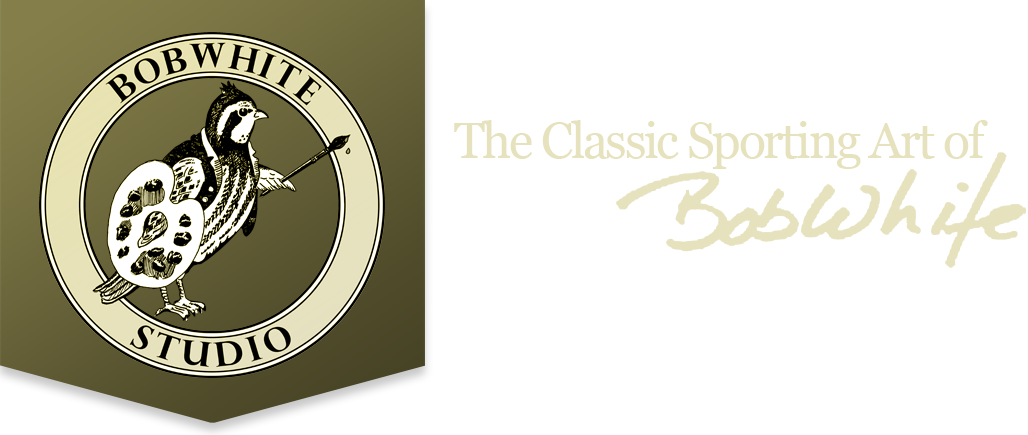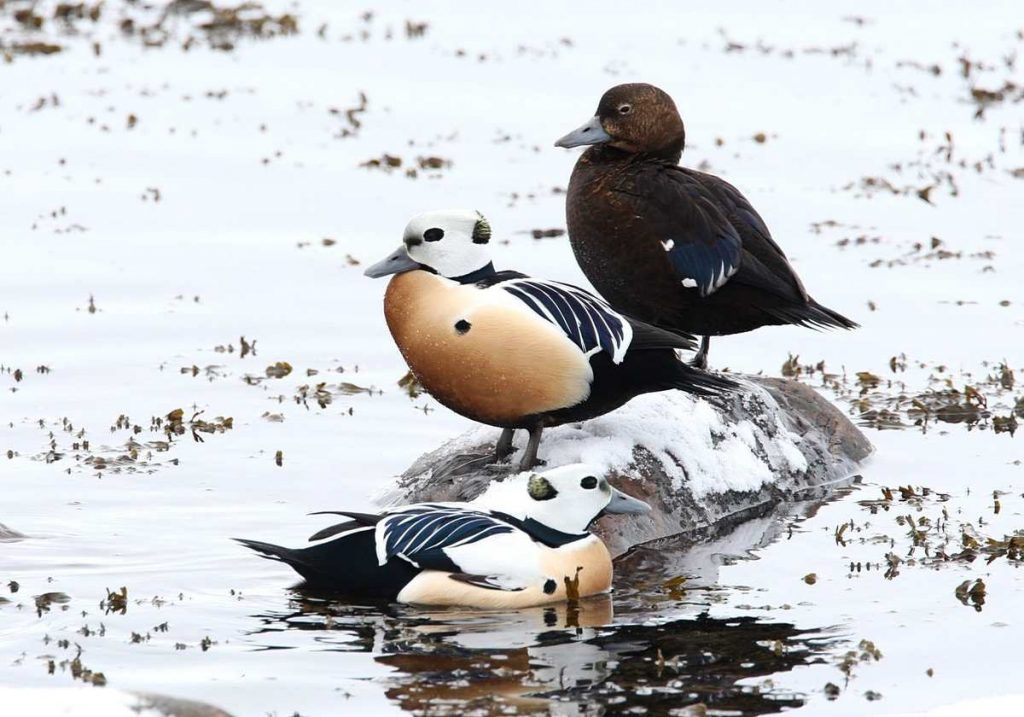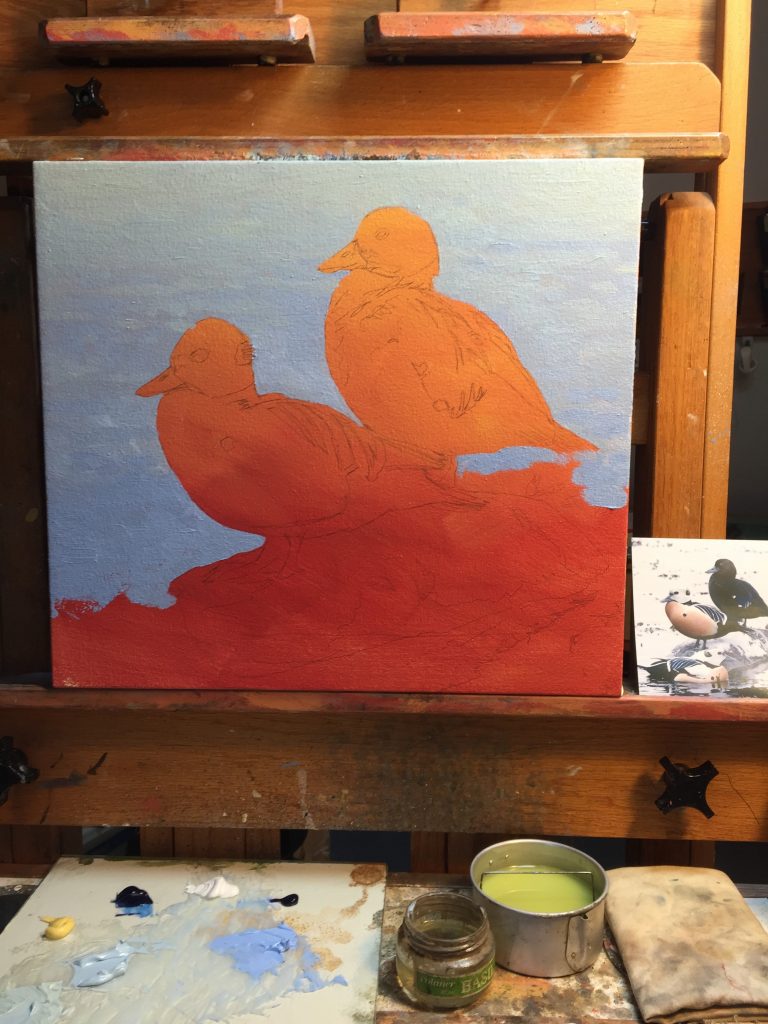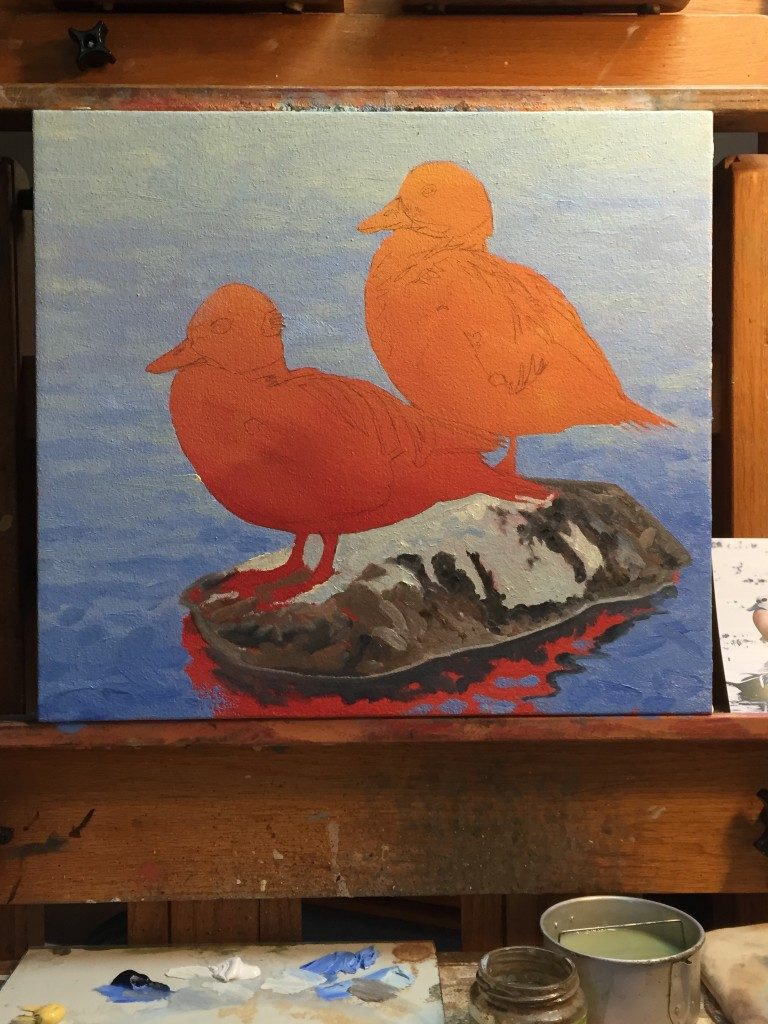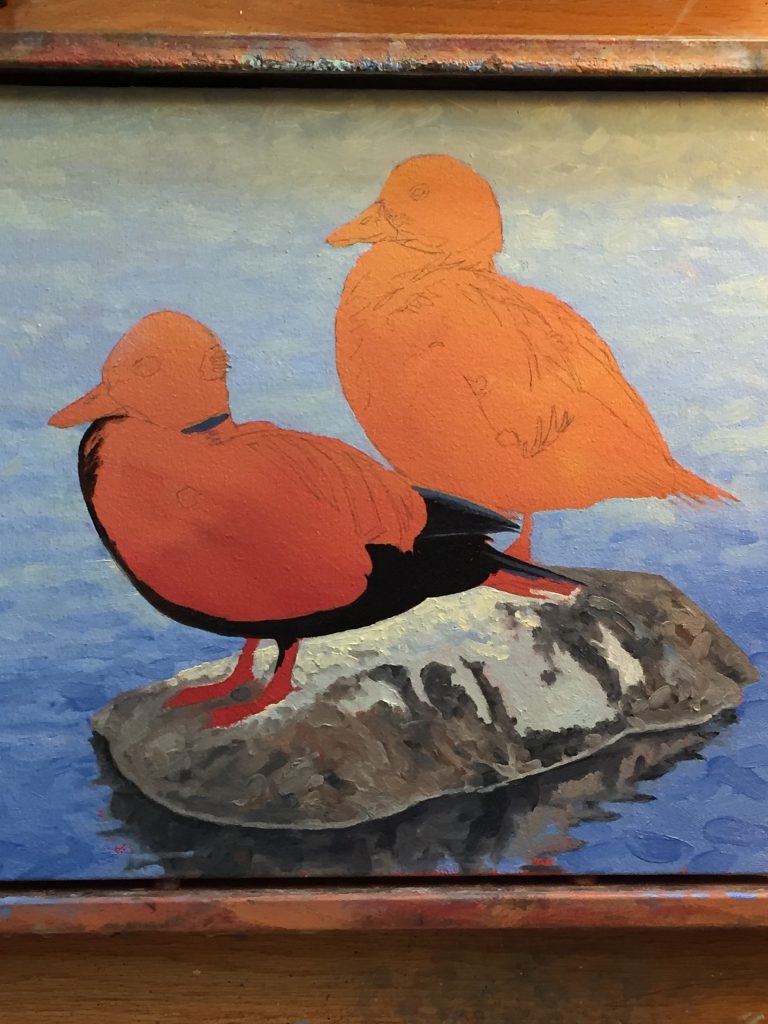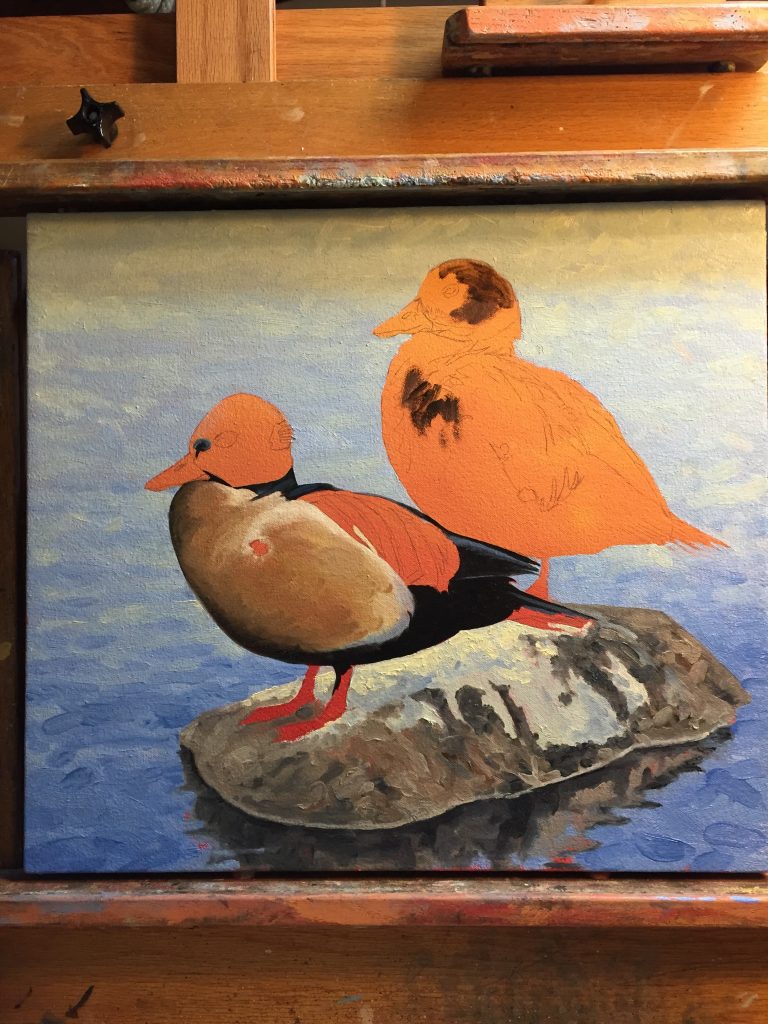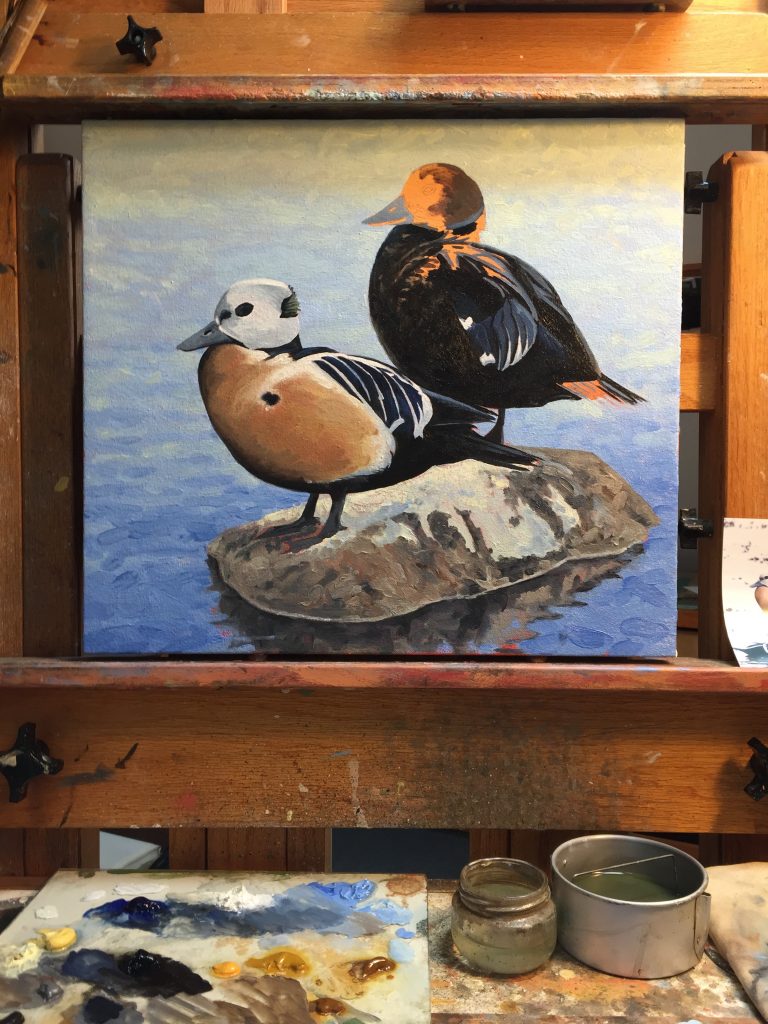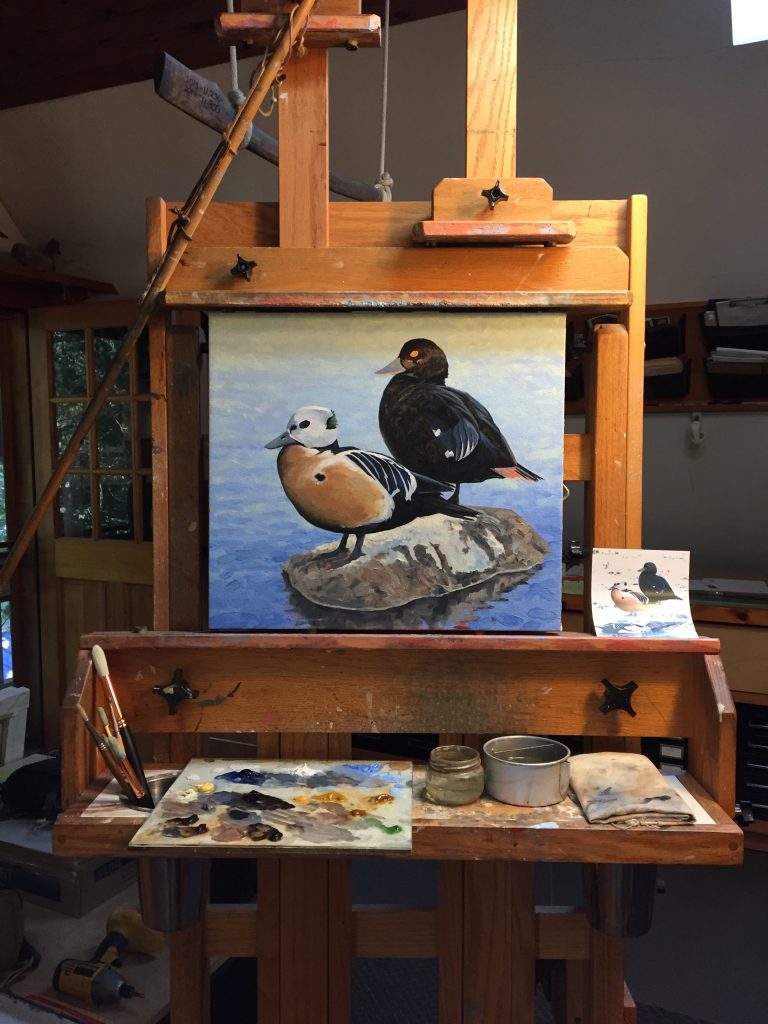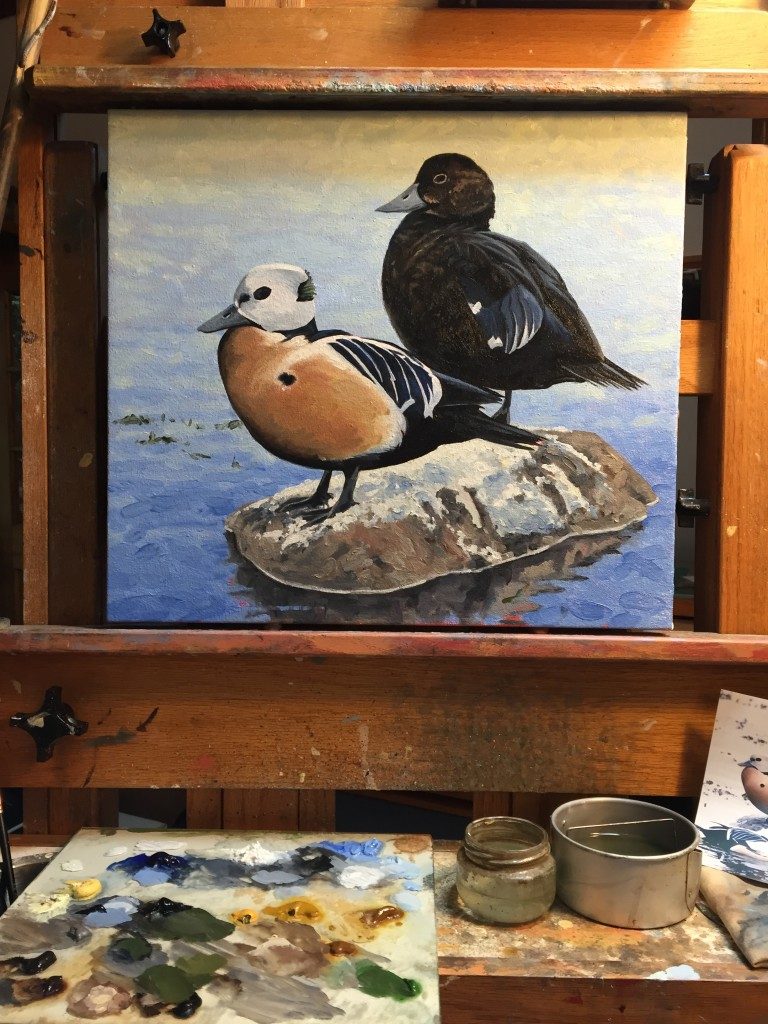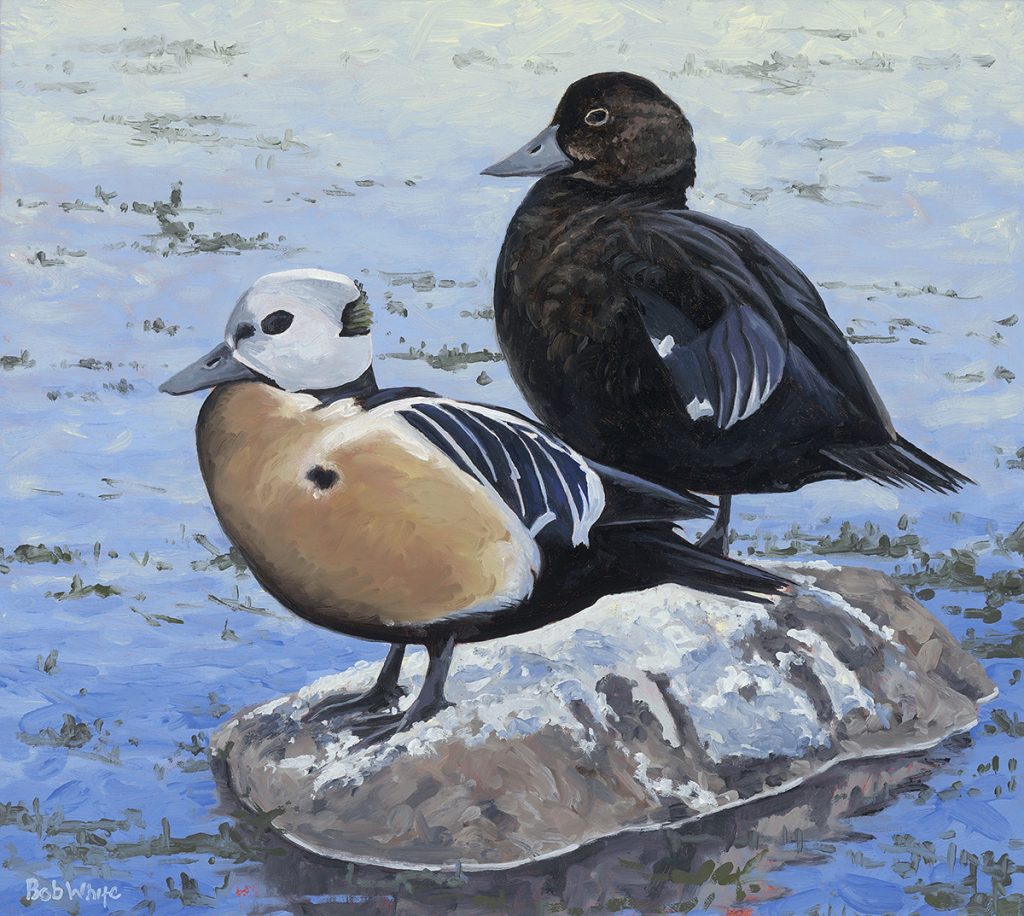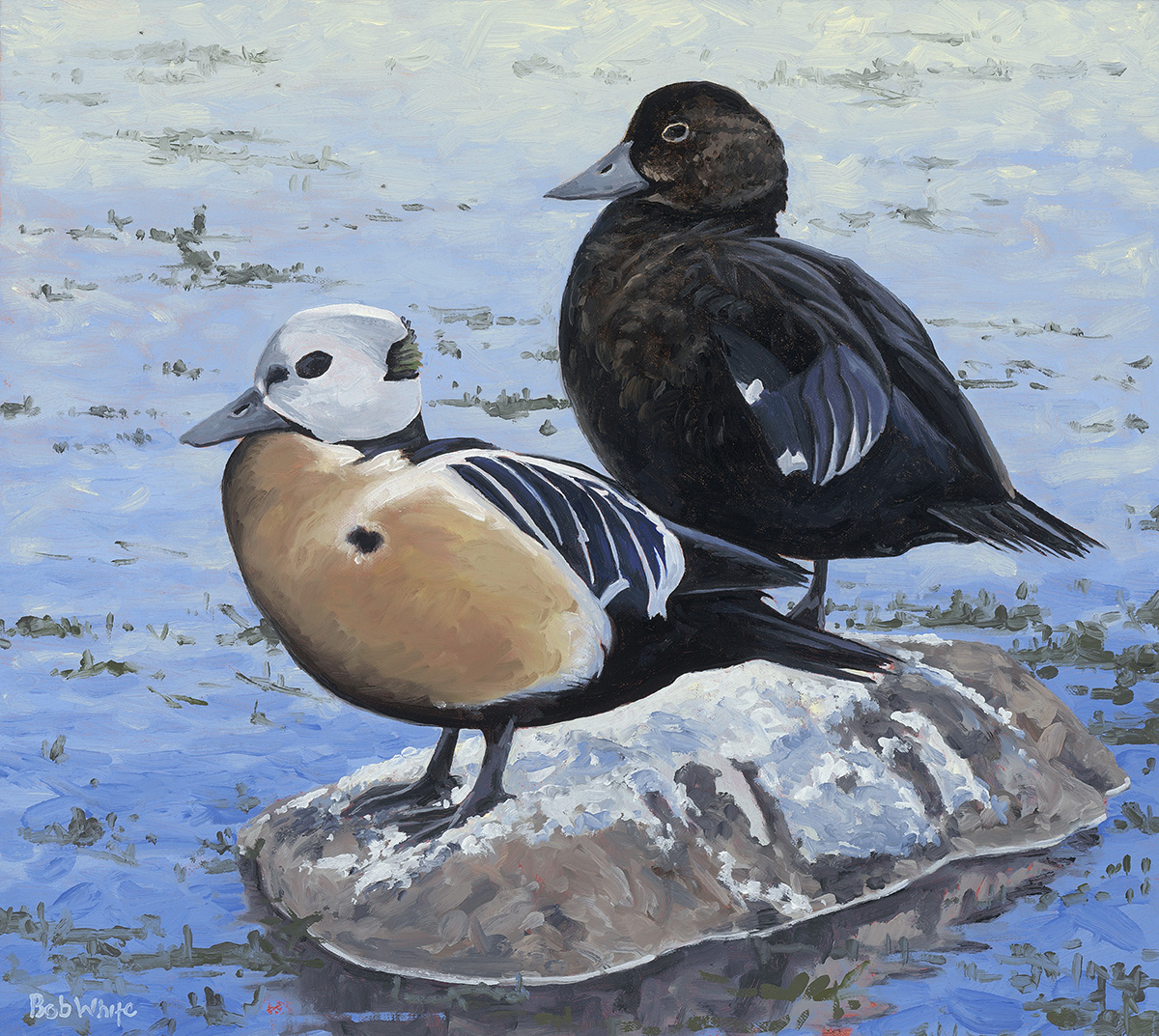
I’ve always been fascinated with waterfowl from the arctic and sub-arctic regions, particularly sea ducks. I find their migration to and from such distant lands captivating, and the prospect to hunt them a rather romantic and nostalgic trip into the past. When I was recently charged with painting a pair of Steller’s Eiders to illustrate the closing column in Ducks Unlimited, I was both excited and a bit dismayed; I’d never hunted for, nor held these birds in my hands. I had no sketches or notes from which to paint.
A cursory search on the Internet yielded a plethora of spectacular images, and one photograph in particular, was exactly what I needed. Luckily, the photographer was credited, and I was able to contact him. I explained who I was and what I needed, and I politely asked for permission to paint from his image. A few days later, I received a very generous note granting me the consent I requested. The note was from Colin Bradshaw, who is an English physician and ornithologist. He was also the chairman of the British Birds Rarities Committee from 1997 to 2008. In all, he was active in the BBRC for almost 20 years, both as a committee member and as chairman. I was honored to have met the man, and thrilled that he granted me his approval.
I always begin my oil paintings by applying a ground of Naples Yellow and Alizarian Crimson to the canvas. The resulting orange hue is uneven by design, fading from dark to light, and depending upon the effect I’m trying to achieve, I’ll often orientate the canvas to provide a darker or lighter foreground.
In this particular painting, there is no discernable horizon, and the background fades away into a sheen of reflected light. A darker, redder foreground will weight the bottom of the canvas, and help me accentuate this effect.
I prefer a very careful and precise drawing, one in which the composition and proportions have all been brought into harmony. This allows me to focus completely upon painting color and light.
Notice that one of the three Eiders in the photograph has not been included. While I use photographs as reference material, the composition is not held a slave to them; two birds are perfect, three too much.
Normally the first things I paint on a new canvas are the sky and the water. In an outdoor painting, the sky is generally the source of light, and the water is fundamentally just a reflection of the sky. Essentially, I am painting light and light reflected, and it sets the entire mood for the finished image.
Once the light of the unseen sky is established in it’s refection, I begin to block-in the rock upon which the pair of eiders is perched.
Just as sky and water are painted at the same time, I also paint objects and their reflections together, keeping in mind that reflections are generally a step or two darker in value that the object being reflected.
With the rock and reflection blocked-in, the only thing left to get paint onto is the birds.
I should qualify what I mean by the term, “blocked-in”. Generally, I try to cover the entire canvas with paint in the initial session. To do so, I attempt to get the colors and mostly the values as close as possible, but I don’t worry about things looking perfect. Once I have everything covered in paint, I’ll go back and make adjustments, refining all the aspects of the painting in concert with one another.
Because there is such a strong source of back lighting, there will be very little detail in the plumage of the birds. I begin with the darkest passages of the male eider…
… and carry it into the breast plumage. It’s here, that I begin to establish color and value on the hen.
Things progress quickly, and I‘m so excited about how the image is coming together that I forget to record all the steps!
The highly contrasting white plumage on the drake really sets him off, and makes him appear to be alive.
The hen requires an added degree of subtly, particularly in the tail feathers, where the light hits them in a flat plane, and they are lighter in value.
Small, but important, details are completed, the hen’s eye, her tail, and some subtle details in her plumage.
The water is refined, but not much additional work is needed. I’m always amazed at how little the ‘roughed-in’ work needs to look finished when all the elements are brought forward.
I add some vegetation in the water, but not as much as there appears to be in the photograph… just enough to tie the painting together.
I purposely leave small areas of the red and orange ground showing through in random places. These random patches create areas of harmonic energy when juxtaposed with the blues of the water.
